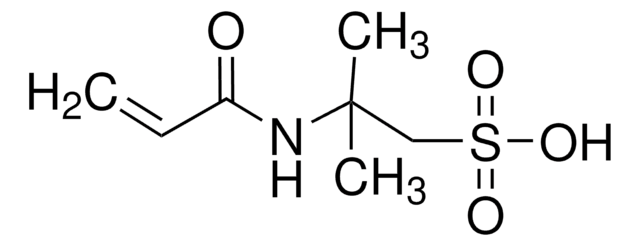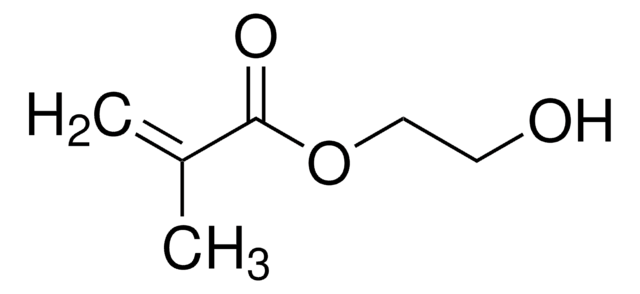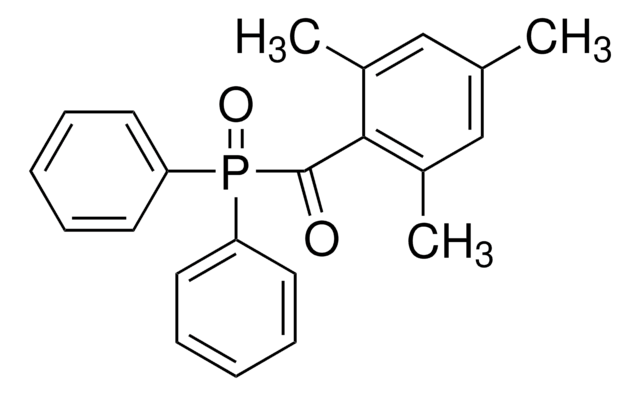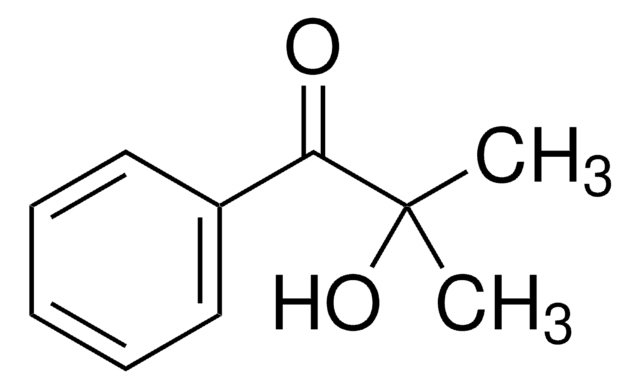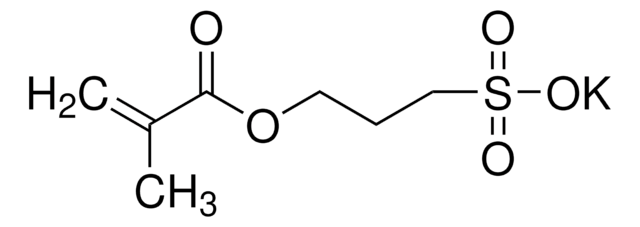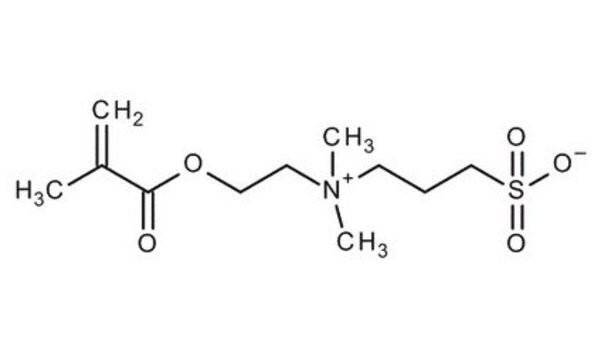Wichtige Dokumente
695890
Phosphorsäure-2-Hydroxyethylmethacrylat-Ester
contains 700-1000 ppm monomethyl ether hydroquinone, 90%
Synonym(e):
2-Hydroxyethyl methacrylate phosphate
About This Item
Empfohlene Produkte
Beschreibung
~25% diester content
Qualitätsniveau
Assay
90%
Form
liquid
Enthält
700-1000 ppm monomethyl ether hydroquinone
Brechungsindex
n20/D 1.4688
Dichte
1.37 g/mL at 25 °C
Lagertemp.
2-8°C
SMILES String
[P](=O)(O)(O)O.O(CCO)C(=O)C(=C)C
InChI
1S/C6H10O3.H3O4P/c1-5(2)6(8)9-4-3-7;1-5(2,3)4/h7H,1,3-4H2,2H3;(H3,1,2,3,4)
InChIKey
POLZHVHESHDZRD-UHFFFAOYSA-N
Verwandte Kategorien
Allgemeine Beschreibung
Anwendung
Signalwort
Danger
H-Sätze
Gefahreneinstufungen
Acute Tox. 4 Oral - Eye Dam. 1 - Met. Corr. 1 - Skin Corr. 1B - STOT SE 3
Zielorgane
Respiratory system
Lagerklassenschlüssel
8A - Combustible corrosive hazardous materials
WGK
WGK 3
Flammpunkt (°F)
293.0 °F - open cup
Flammpunkt (°C)
145 °C - open cup
Persönliche Schutzausrüstung
Faceshields, Gloves, Goggles, type ABEK (EN14387) respirator filter
Hier finden Sie alle aktuellen Versionen:
Besitzen Sie dieses Produkt bereits?
In der Dokumentenbibliothek finden Sie die Dokumentation zu den Produkten, die Sie kürzlich erworben haben.
Kunden haben sich ebenfalls angesehen
Unser Team von Wissenschaftlern verfügt über Erfahrung in allen Forschungsbereichen einschließlich Life Science, Materialwissenschaften, chemischer Synthese, Chromatographie, Analytik und vielen mehr..
Setzen Sie sich mit dem technischen Dienst in Verbindung.![Bis[2-(methacryloyloxy)ethyl]-Phosphat](/deepweb/assets/sigmaaldrich/product/structures/128/336/4e7a3e38-338c-423e-95b8-70d9d1f8e121/640/4e7a3e38-338c-423e-95b8-70d9d1f8e121.png)
![[2-(Methacryloyloxy)-ethyl]-dimethyl-(3-sulfopropyl)-ammoniumhydroxid 95%](/deepweb/assets/sigmaaldrich/product/structures/217/219/73c91e1c-0ee4-4b3d-bead-a6dc3d09d1da/640/73c91e1c-0ee4-4b3d-bead-a6dc3d09d1da.png)



